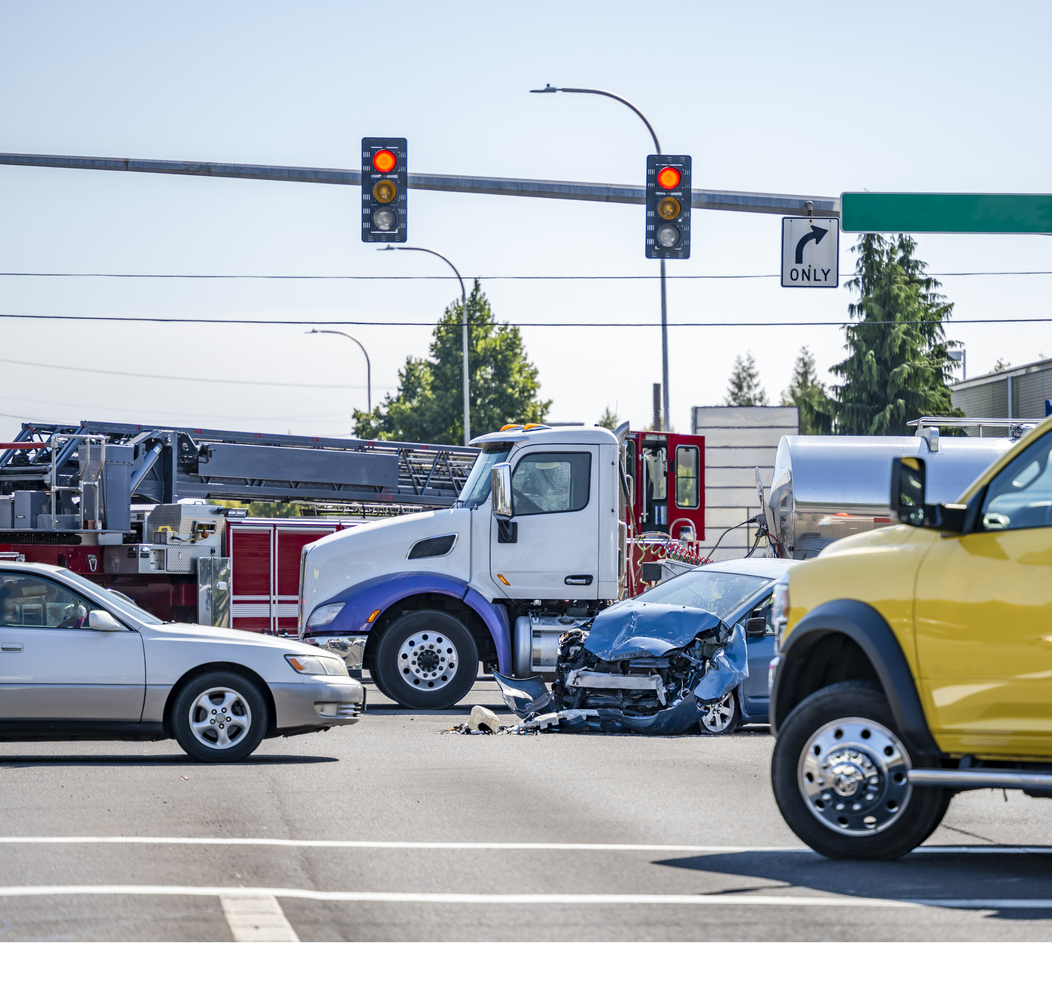About Rear-end Collisions
If you were injured in a rear-end collision in Florida, an experienced car accident attorney can help you to understand the legal options that may be available to you. For example, according to a news report, a crash in Perdido Key left a woman dead and two other people seriously injured after a utility truck slammed into the back of a passenger car. The accident occurred when the passenger car slowed down and the utility truck was unable to come to a safe stop. The fatality was the backseat passenger of the car. The driver and another passenger were transported to a local hospital by helicopter. The utility truck driver, who was operating the Escambia County Utility Authority truck, suffered minor injuries and was also transported to the hospital.
Following too closely. Failing to attend to the traffic ahead. Both of these terms are used to describe the cause of a type of crash that is the result of up to half of all two-vehicle crashes in the United States: the rear-end collision. According to the Florida Department of Transportation, in 2017, following too closely accounted for 14 fatal accidents in the state, and 359 accidents involving incapacitating injuries. More than 2,600 people suffered non-incapacitating injuries in this type of crash, and 8,760 other people suffered possible injuries. In more than 10,700 accidents caused by one driver following another too closely, all of the vehicle occupants were lucky enough to walk away without injury.
What Is a Rear-End Collision?
A rear-end collision is a crash that is caused when the front end of one vehicle collides with the back of the vehicle it is following. While it is generally assumed that a rear-end crash is the fault of the driver of the following car, occasionally the lead car’s driver is the one to blame. Circumstances where this would be true include:
- The driver of the lead car reverses suddenly;
- The driver of the lead car signals to turn and then fails to complete the turn;
- The brake lights on the lead car fail; or
- The lead car experiences a flat tire and the driver neither pulls over nor engages their hazard lights.
While rear-end collisions result in a low fatality rate in comparison to other types of collisions, this type of accident can be far from minor, particularly if there is an extreme size difference between the two vehicles involved.
Causes of Rear-End Crashes
As with any type of accident, rear-end collisions occur for many reasons, including:
Tailgating
Tailgating is defined as the act of following another car too closely, thus not allowing enough time to come to a safe stop if the lead car suddenly slows or stops. It is considered an aggressive driving behavior, and is one of the main causes of rear-end collisions. When one driver tailgates the car in front of it, this not only decreases the amount of time that the driver has to stop their vehicle, but also decreases the amount of time that the driver has to perceive a hazard ahead and respond accordingly.
Speeding
Like tailgating, speeding hampers a driver’s ability to perceive, respond to, and safely stop their vehicle when a hazard appears on the road ahead. Speeding also increases the severity of a crash, presenting a higher likelihood of serious injuries.
Distracted Driving
Distracted driving was to blame for 3,166 traffic-related fatalities in 2017 alone, according to the National Highway Traffic Safety Administration. Driver distractions fall into three categories:
- Manual distractions: distractions that cause the driver to take his or her hands from the wheel;
- Visual distractions: distractions that draw the driver’s eyes from the roadway; and
- Cognitive distractions: distractions that pull the driver’s focus from the task of driving.
Some driving distractions fall into more than one of the distraction categories. Texting, for example, causes manual, visual, and cognitive distraction, which is why officials are so concerned about texting while driving. In the estimated five seconds it takes a driver to read or reply to a text, when traveling at a speed of 55 miles per hour the driver’s vehicle will travel the length of a football field without the driver’s hands on the wheel, eyes on the road, and mind engaged in the task of driving. Besides texting, other common driver distractions include:
- Eating or drinking;
- Adjusting vehicle controls, such as the air conditioning, windshield wipers, stereo, or GPS;
- Visiting with other occupants in the vehicle;
- Other cell phone use such as talking on the phone or browsing the internet;
- Tending to pets in the vehicle; and
- External distractions such as people in other cars, billboards, or previously occurring accidents.
Fatigued Driving
Driving while drowsy has similar impacts to a driver’s ability to safely operate a motor vehicle as alcohol impairment does, with reaction times, ability to sustain attention, and awareness of hazards all diminishing as a driver becomes more fatigued. Fatigued drivers are more than three times more likely to become involved in a car accident than well-rested drivers.
Alcohol Or Drug Impairment
Driving while impaired by alcohol or drugs—including legal, illegal, prescription drugs, or over-the-counter medication—creates deficits in a driver’s cognitive function and physical reaction time needed for the safe operation of a motor vehicle. These substances impact a driver’s ability to perceive and react to hazards on the roadway, to pay attention, and to properly gauge the distance between their vehicle and the one ahead of it. This type of impairment may also cause the driver to drive recklessly or aggressively.
Improperly Maintained Vehicles
The maintenance of a vehicle can make or break the driver’s ability to operate that vehicle safely. Some vehicle features, if improperly maintained, can cause rear-end collisions, including failure of tires, braking systems, and brake lights.
Common Injuries From Rear-End Accidents
Rear-end collisions are often referred to as “whiplash crashes” due to the high number of soft-tissue neck injuries that are incurred by occupants in the lead vehicle in this type of crash. This type of injury is caused by the violent back-and-forth motion that the neck makes in reaction to being hit from behind. While this injury is typically regarded as minor and often resolves on its own, half of all whiplash sufferers report lingering pain a year after the accident took place. Other common injuries from rear-end collisions include:
- Back injuries due to the force of the impact causing compression of the spine and discs in the lower spinal column.
- Head and brain injuries due to the head coming into contact with parts of the vehicle or the brain being jolted within the skull due to the force of the impact.
- Wrist and arm injuries due to the positioning of the hands on the wheel when the collision occurs.
- Injuries caused by airbags or seat belts. While these protective features do save lives in automobile crashes, they’re also frequently responsible for burns and broken bones.
Many injuries from rear-end collisions don’t necessarily present immediate symptoms, including whiplash and other soft tissue injuries, back injuries, and brain injuries. Obtain a medical evaluation after a rear-end collision even if you don’t feel hurt.
How Do You Prevent a Rear-End Crash?
It is impossible to avoid all risk of collision, as there are just too many factors that are beyond a single driver’s control. However, there are some tips that you can use to avoid many of the situations that lead to rear-end collisions, including:
- Maintain a safe following distance. Bear in mind that the length of time it takes for you to come to a safe stop is proportional to the size and weight of your vehicle. If you’re driving a small passenger car, for example, the distance you need to stop is going to be less than if you were driving a tractor-trailer. Also factor in the weather conditions and the conditions of the road. On wet roads or those that have become slick with oil, you will need more distance to come to a safe stop than on dry roads. The bottom line: regardless of what kind of vehicle you’re driving, it isn’t safe to tailgate other drivers.
- Stay alert. Avoid distractions that might cause you to miss hazards up ahead, including other vehicles that have suddenly decelerated.
- Plan your trip. Monitor weather and traffic conditions and try to avoid traveling during rush hour.
- Slow down early for intersections and toll booths. Frequent stops and starts at such places can add to a buildup of oil, fuel, and other slick debris that can make stopping more difficult.
- Be aware of yellow lights, and what they mean. Yellow lights are used to caution drivers that the light is about to turn red. Contrary to popular belief, yellow lights do not mean that all drivers should speed as quickly as they can through the intersection. Never assume that the driver ahead of you is going to proceed through the yellow light. Be prepared to stop if the driver in front of you stops.
- Maintain a comfortable distance between your car and the car in front of you at intersections to allow vehicles to maneuver if they need to change lanes or if they roll a little before taking off, which is common for vehicles with manual transmissions.
- Make sure your brake lights are working properly and promptly fix them if they aren’t. Your brake lights are the main indicator for drivers behind you that you’re slowing down or stopping.
- Do not roll through intersections. Ensure that you’re able to come to a safe stop if the vehicle in front of you stops suddenly.
- Use your rearview mirror to determine what drivers are doing behind you.
- If possible, move out of the way of vehicles that are following too closely behind you and beware of aggressive drivers who may be deliberately tailgating. It is best to avoid driving alongside or directly in front of or behind aggressive drivers. Generally those drivers are in a hurry and it is best to simply let them pass and then report them if they are creating a hazard for other drivers on the roadway.
- Do not drive if you are tired, ill, or under the influence of drugs or alcohol as all of these factors impair your ability to respond quickly to hazards ahead or to judge the distance between your car and others on the road.
- Don’t ride your brakes. The driver behind you is unable to determine your intentions if your brake lights are always on.
- Avoid distractions while driving, including cell phone use, texting, eating or drinking, or focusing on your passengers.
- Keep a safe distance between yourself and any emergency vehicles. Their red lights are a warning to be cautious around them.
I Was Injured. What Should I Do?
If you’ve been injured in a rear-end collision in Florida, there are several things you need to do as quickly as possible:
- Seek medical treatment for all injuries.
- Contact your insurance provider, as your personal injury protection (PIP) policy will likely provide quick compensation for your medical expenses or missed wages due to your accident-related injuries.
- Keep copies of all documentation pertaining to the accident, including the police report and any witness contact information from the scene, the other driver’s insurance information, bills and diagnostic information from medical providers, and repair bills or estimates for damage to your car.
- Contact a car accident injury who can help you understand your legal options. In Florida, you may only seek compensation from the other driver if your injuries are determined to have reached the “serious injury threshold” or you’ve exceeded the limits of your PIP policy. Serious injuries in Florida are those defined as
- Significant and permanent loss of an important body function
- Permanent injury within a degree of medical probability
- Significant and permanent scarring and disfigurement
- Death
- Avoid making statements about your accident to the other driver’s insurance company, the other driver, or witnesses. If asked by law enforcement, do provide details honestly, as you remember them.
For more information about rear-end collisions, contact a car accident lawyer.






